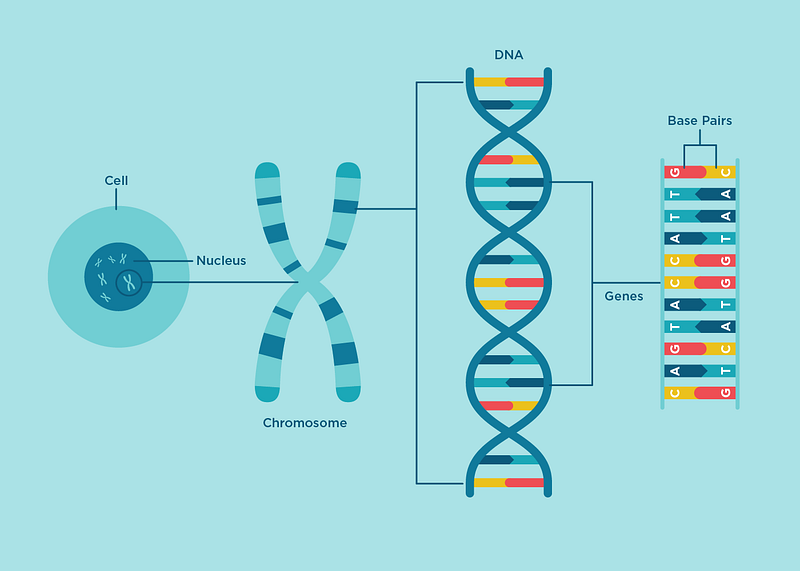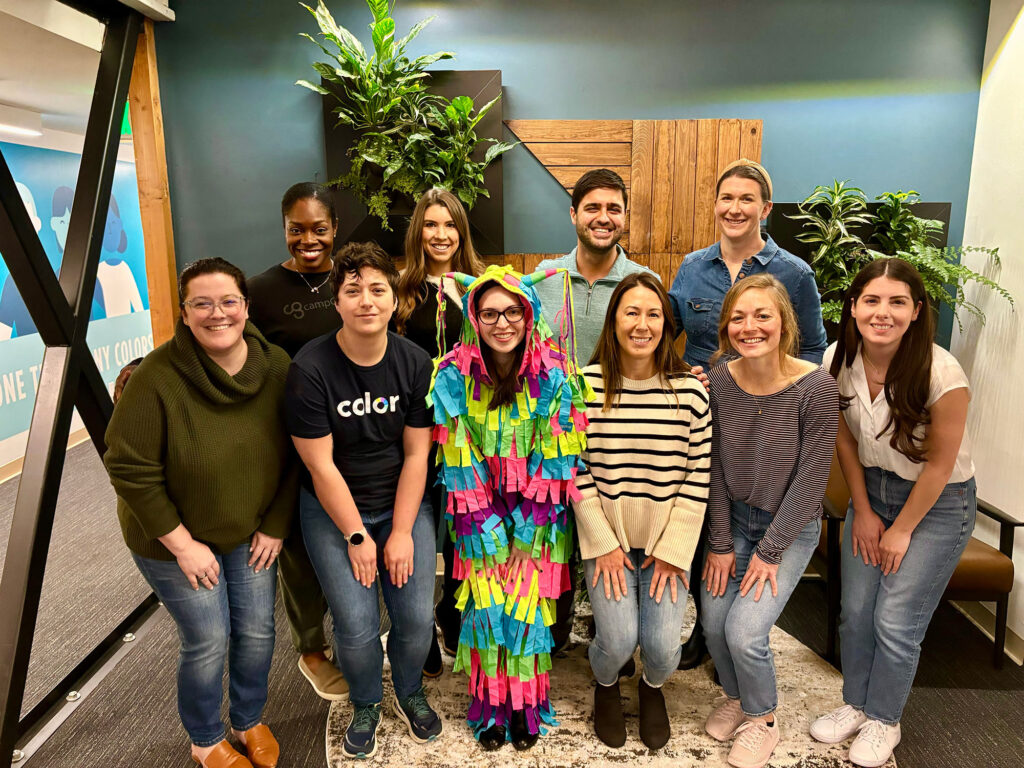News & Articles
Genetics 101: Understanding the basics of genetic testing
Lauren Ryan
By now, you’ve probably heard of genetic testing, even if it wasn’t something you learned about in school. With so many options now available, it’s important to understand the basic components of what is being tested and how to make sense of the results you receive.
With the start of the new year, we thought it was a good time to brush up on the basics and learn more about what you can do with genetic testing results. By making complex concepts more accessible, we’ll help answer questions about genetics you may be too afraid to ask, but should know as genetics increasingly becomes a part of healthcare.

What is a gene? How many do I have, and where do they come from?
The human body contains trillions of cells with different jobs. Skin cells protect our internal organs from the environment; muscle cells help our body move; and so on. Genes tell these cells what to do — they are the instructional manuals that tell our body how to grow and function. Inside every cell is a complete human genome, or about 20,000 to 25,000 of these genes.
Our genes are made up of DNA (deoxyribonucleic acid). If each gene is an instruction manual for how our body functions, then DNA is the letters, called base pairs, that spell out the manual. There are 3 billion base pairs, made up of the letters A, C, G and T.
Our genes are passed down to us from our two parents. We all have two copies of most of our genes: one copy of each gene from our father, the other from our mother. We’re combinations of our parents’ genes, but we’re each a unique combination, which is why we are different even from our siblings.
What is a genetic variant? How do they happen, and what does it mean if I have one?
Our cells divide to make more cells, so our bodies can grow. When those copies are made, all 20,000–25,000 genes inside the cell are copied. The DNA copying process isn’t perfect — it is such a big job that sometimes random errors called variants occur just like typos. Our body has ways of fixing these errors, but occasionally one isn’t caught.
When that happens, the new cell has a permanent genetic error, which gets copied into two new cells when that cell divides, and so on. These variants accumulate throughout our lives, usually causing us no harm whatsoever, and aren’t usually detectable by any tests. But every once in awhile a variant prevents a gene from performing its usual function. These harmful errors are called mutations.
Occasionally, a child inherits a mutation from a parent. People who inherit these mutations typically have a greater chance of developing diseases like cancer or high cholesterol and often at an earlier age.
What is genetic testing?
There are many different types of genetic tests doctors can use to detect genetic variants. Some analyze the unique combination of DNA you inherited from your parents, which is usually easiest to collect from your saliva or blood. The DNA is extracted from the sample, then copied many, many times over to ensure the test is accurate. A special machine then sequences the DNA, and the data is analyzed by scientists to determine if any of your unique variants are harmful mutations. Different technology for sequencing can produce different results based on quality, depth, and methods.
What is the value of genetic testing?
When it comes to genetics, knowledge is power. Learning if you have an increased genetic risk for cancer, a heart condition, or a medication response can make a difference — it allows you and your healthcare provider to create a screening and management plan tailored to your unique genetic makeup.
Most diseases are complex and have many causes. Understanding if you have a genetic predisposition to certain diseases gives you critical information that can help you take action. For example, with hereditary cancer, this information is important because detecting cancer at its earliest stage improves the likelihood of a favorable outcome.
What are the kinds of results I could get from a genetic test?
A small percentage of people receive a positive result, meaning a mutation associated with the disorders included in the testing panel used was identified. Finding a mutation is not a diagnosis of a disease, and does not mean you will definitely develop a hereditary condition.
Most people will receive a negative result, meaning no mutations associated with the disorders included in the testing panel were found in the genes analyzed. While this can be reassuring, it does not mean that you are risk-free. Genetics is just one piece of the puzzle — things like lifestyle and environment can also impact risk — so it is important to follow the healthcare plan recommended by your provider.
Your test could find variants of uncertain significance, which is normal. It is common to see changes in genes that require further research to determine if they are associated with an increased risk for developing a disorder. Most are eventually found to be harmless.
With all this said, it is important to remember no genetic test detects everything. It is possible that some types of genetic changes, which increase the chance of a disease or disorder, will not be detected by genetic testing. Genetic scientists are making more and more discoveries as the field evolves and companies like Color consider those developments when updating their products.

What am I supposed to do with my genetic test results?
Receiving your results is just the beginning! Genetic counseling is also an important next step: genetic counselors do the valuable work of helping to make sense of your unique results and reviewing possible next steps. Regardless of the type of results you receive, we recommend that you share them with your healthcare provider, who can then help create a personalized healthcare plan..
Your results could also be useful to your direct relatives since they share your DNA. Consider sharing your results, as testing may be useful for them as well. Keep in mind your results are unique to you and even if you don’t have a mutation, your relatives may.
For more information about genetic testing, you can find a genetic counselor in your ZIP code by searching at www.findageneticcounselor.com or you can speak to one of Color’s board-certified genetic counselors at 844–352–6567 or geneticcounselors@color.com.
About Color
Color is the leader in delivering precision healthcare through cutting-edge technology. Color makes data-driven health programs such as clinical genetics accessible, convenient, and cost-effective for everyone. Color partners with leading health systems, premier employers, and national health initiatives around the world including the million-person All of Us program by the National Institutes of Health. For more information about Color, visit www.color.com



